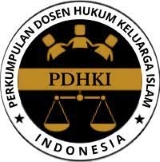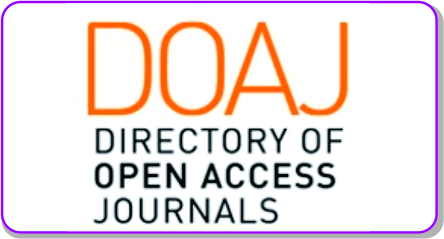Exploitation of Women in Virtual Spaces: A New Challenge to Islamic Law in the Post-Truth Era
(1) UIN Syekh Ali Hasan Ahmad Addary Padangsidimpuan
(2) UIN Syekh Ali Hasan Ahmad Addary Padangsidimpuan
(*) Corresponding Author
Abstract
The exploitation of women in social media has become a worrying phenomenon in the digital era, where women are often used as objects to attract public attention, increase popularity, or maximize commercial profits. This phenomenon includes various forms of objectification, stereotyping, and the spread of content that degrades women's dignity. This research aims to examine this phenomenon from a critical perspective of Islamic law, by focusing on the protection of human honor (hifz al-'ird) as one of the main elements in maqashid al-shari'ah. The research method used is a normative approach with descriptive-qualitative analysis of relevant Islamic legal principles, including the prohibition of actions that degrade individual dignity, the need to maintain women's honor, and moral responsibility in the media. The study also analyzes factors that encourage women's exploitation on social media, such as content commercialization, patriarchal culture, and the lack of effective regulation on digital platforms. The results of the study show that the exploitation of women in social media is contrary to the values of justice and respect for human dignity in Islam. Furthermore, Islamic law mandates the need for strict supervision and regulation to prevent exploitative acts, and emphasizes the importance of media ethics education for the community. This study makes an important contribution in formulating a strategy based on Islamic law to overcome the exploitation of women on social media, as well as encouraging the creation of a fairer and more dignified digital ecosystem.
Keywords
Full Text:
PDFReferences
Akhmad Rudi Maswanto, "The Phenomenon of Women's Interaction on Social Media in the Perspective of Islamic Law," AL-ASHLAH: Journal of Family Law and Islamic Law 3, no. 1 (2024): 20–35. https://doi.org/10.69552/alashlah.v3i1.2505
Alhani Azhari Putri dkk., “ Study of Indonesian Society's Consumer Culture Through Herbert Marcuse's One Dimensional Man Theory Approach,” Jurnal Ilmu Sosial dan Ilmu Politik 38, no. 1 (2024): 20–34.
Aslati Aslati and Silawati Silawati, "The Phenomenon of Women's Exploitation by the Media," Journal of Da'wah Risalah 29, no. 2 (2018): 133–42. http://dx.doi.org/10.24014/jdr.v29i2.6389
Bayu Setyawan, “Patriarchy As The Root Of Gender Discrimination In Sri Lanka,” Resolusi: Jurnal Sosial Politik 3, no. 1 (2020): 1–14.
Dewa Ayu Dian Sawitri and Ni Ketut Supasti Dharmawan, “Protection of Transformation of Lontar Creative Works in the Form of Digitalization,” Acta Comitas: Jurnal Hukum Kenotariatan 5, no. 2 (2020): 298–308.
Dewi Sallamah dan Dinie Anggraeni Dewi, “The Role and Implementation of Pancasila Values in Life in the Era of Globalization,” Antropocene: Jurnal Penelitian Ilmu Humaniora 3, no. 1 (2023): 9–14. https://doi.org/10.36456/inventa.5.2.a3549
[1]Een Irianti dan Tania Adesari, “Representation of Women in Gender Perspective (Critical Discourse Analysis of Van Dijk on the News of the Ratna S. Paet Hoax Case in the Republik and Kompas.com Mass Media,” Journal of Scientific Communication (JSC) 1, no. 2 (2020). http://dx.doi.org/10.31506/jsc.v1i2.7803
Fahmi Ibnu Khoer, Syarifah Gustiawati, dan Yono Yono, “Women's Leadership in the Perspective of Islamic Law," As-Syar'i: Journal of Family Guidance & Counseling 4, no. 1 (2022): 42–49. https://doi.org/10.47467/as.v4i1.536
Feryna Nur Rosyidah dan Nunung Nurwati, “Gender and stereotypes: Construction of reality in social media Instagram,” Share Social Work Journal 9, no. 1 (2019): 10–19.
H Imron Rosyadi and M H SH, Reconstruction of the Epistemology of Islamic Family Law (Prenada Media, 2022). 1-30.
Hafifah Dinda Pratiwi, Sunarto Sunarto, dan Triyono Lukmantoro, “Gender Discrimination Against Journalists Women in Media,” Interaksi Online 9, no. 3 (2021): 111–25.
Heldi Heldi, “ Consumption Patterns of Post-Modern Society (A Study of Consumptive Behavior in Post-Modern Society)),” Al-Iqtishad: Jurnal Ilmu Ekonomi Syariah 1, no. 1 (2009). DOI: 10.15408/aiq.v1i1.2458
Ika Atikah, "Legal Research Methods," 2022. p. 3-9.
Imamatul Silfia dan Rizaludin Kurniawan, “ Media Stigma Against Female Fandom in Fan Reporting K-Pop,” Jurnal Komunikasi 17, no. 1 (2022): 1–16. https://doi.org/10.20885/komunikasi.vol17.iss1.art1
Izzat Zaini, “Prevention of Sexual Harassment in the Qur'an: Perspective of Tafsir Al-Qurthubi (Study of Munasabah Qs. An-Nur: 30-31)” (Institut PTIQ Jakarta, 2022). h. 1-22.
Kana Kurniawan, Women in the Perspective of Islamic Law and Human Rights (Publica Indonesia Utama, 2022). h. 1-20.
Khoiruddin Nasution, “Protection of Children in Indonesian Islamic Family Law,” Al-’Adalah 13, no. 1 (2017): 1–10.
Korry El-Yana, Perempuan dalam Bingkai Media (Indigo Media, 2021). h. 5-7.
Kristophorus Hadiono and Rina Candra Noor Santi, “Welcoming Digital Transformation,” 2020. h. 1-14.
Lilis Hidayati Yuli Astutik and Muhammad Ngizzul Muttaqin, “Positive Family Law in the Muslim World Through Family Law Reform: Islamic Family Law,” Islamika: Jurnal Ilmu-Ilmu Keislaman 20, no. 01 (2020): 55–65.
M Alif Fianto and Syamsuri Syamsuri, "Positive Legal Studies and Islamic Law on the Exploitation of Women's Bodies through Live Streaming on Social Media," Hakam: Journal of Islamic Law Studies and Islamic Economic Law 7, no. 2 (2023). h. 4-15.
M Faizal Kurniawan, “ Pekanbaru City Community Perceptions of the Commodification of Islam in Television Advertisements,” 2023. h. 5-24.
Muihibbin, Z. (2011) Wainitai dailaim Islaim. Juirnail Sosiail Huimainiorai, 4 (2): 109-120.
Nabilah Vincy Ramadhani dkk., “Phenomenon of Teenage Phubbing in Using TikTok,” Al-Furqan: Journal of Religion, Social, and Culture 3, no. 6 (2024): 2810–26. https://doi.org/10.35931/alfurqan.v3i6
Nilna Fauza and Moh Afandi, “Perjanjian Perkawinan Dalam Menjamin Hak-Hak Perempuan,” Al-Manhaj: Journal of Indonesian Islamic Family Law 2, no. 1 (2020): 1–17.
Nurul Qamar and Farah Syah Rezah, Legal Research Methods: Doctrinal and Non-Doctrinal (CV. Social Political Genius (SIGn), 2020). p. 8-10.
Nurul Rahma Nur, Akhmad Hanafi Dain Yunta, and Muhammad Harsya Bachtiar, “Boycotting Crime Supporting Products from Maqāṣid Al-Syarī'ah Perspective,” AL-FIKRAH: Jurnal Kajian Islam 1, no. 1 (2024): 284–303.
Primada Qurrota Ayun, “Sensuality and Women's Bodies in Horror Films in Indonesia (A Study of the Political Economy of Media),” JURNAL SIMBOLIKA Research and Learning in Communication Study 1, no. 1 (2015). Doi:10.31289/simbollika.v1i1.46
Raitnai Noviaini, middle ground understanding advertising, Yokyaikairtai: Puistaikai peilaijair, 2002, h.25
Sarmauli Sarmauli, Selvia Veronika, and Yuverdina Yuverdina, “Gender Studies on Gender Inequality in Indonesia,” Indonesian Journal on Education (IJoEd) 1, no. 2 (2024): 66–70.
Sinta Mahera, “Expression of Religiosity of UIN Ar-Raniry Students on Social Media,” 2023. h. 1-81.
Sulehah Sulehah, “ The Effect of Implementing Puzzle Play Therapy on Anxiety Levels in Preschool Children Aged 3-6 Years in the Inpatient Room of the Serang City Hospital in 2023,”. h. 2-16.
Usep Saepullah, “The Nature and Transformation of Islamic Family Law Regarding Child Protection” (LP2M UIN Sunan Gunung Djati, 2021).
Zainuddin Ali, Legal research methods (Sinar Grafika, 2021). p. 16.
DOI: https://doi.org/10.24952/almaqasid.v11i1.14369
Refbacks
- There are currently no refbacks.
Copyright (c) 2025 Jurnal AL-MAQASID: Jurnal Ilmu Kesyariahan dan Keperdataan

This work is licensed under a Creative Commons Attribution-ShareAlike 4.0 International License.



2.gif)


















